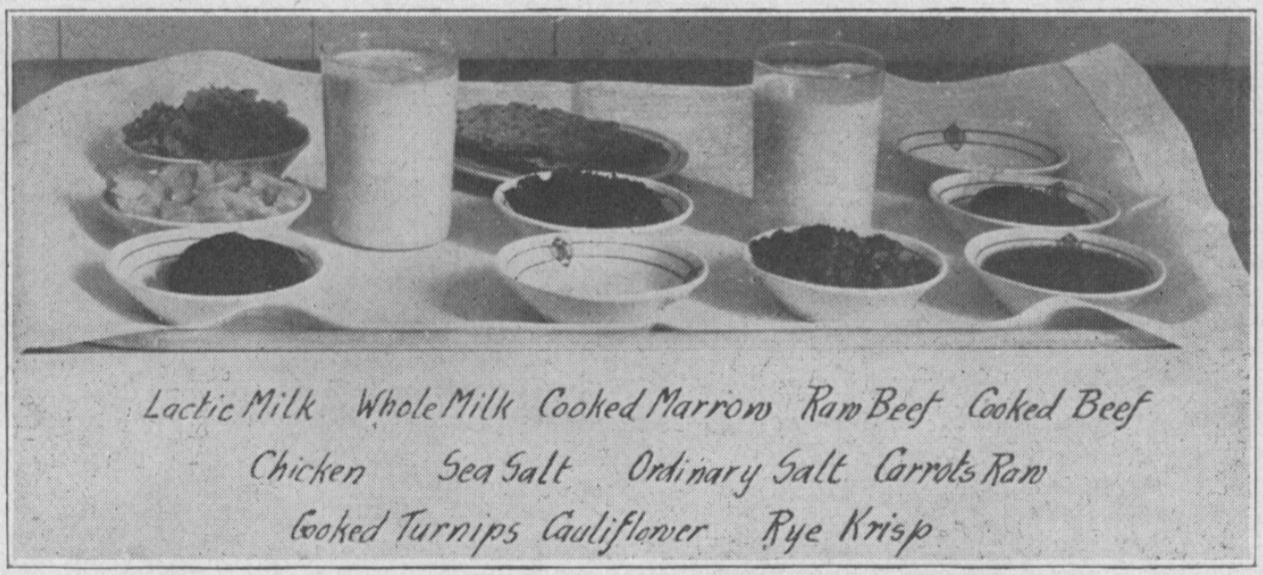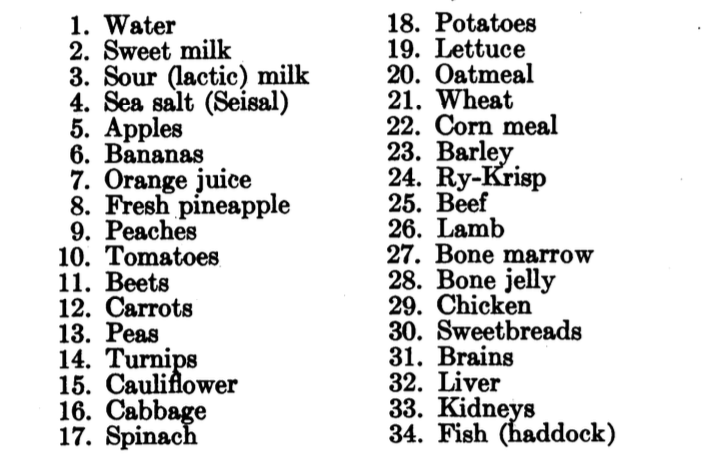 In the 1920’s, a Chicago pediatrician conducted an unprecedented study in nutrition. For six years (1), Clara M. Davis oversaw an experiment in which infants were offered a variety of foods and then allowed to eat whatever they wanted. The children, age six to 11 months, were housed in an orphanage and selected for the study because they were just weaned and thus had no previous prejudices or experiences with ordinary foods.
In the 1920’s, a Chicago pediatrician conducted an unprecedented study in nutrition. For six years (1), Clara M. Davis oversaw an experiment in which infants were offered a variety of foods and then allowed to eat whatever they wanted. The children, age six to 11 months, were housed in an orphanage and selected for the study because they were just weaned and thus had no previous prejudices or experiences with ordinary foods.
At the time, pediatricians enamored with the newly emerging science of nutrition were locked in a fierce battle with children who apparently didn’t care what doctors wanted them to eat. “One physician of the period estimated that 50%– 90% of visits to pediatricians’ offices involved mothers who were frantic about their children’s refusals to eat… some doctors responded to the children’s hunger strikes by declaring war on children’s aberrant appetites and eating patterns,” wrote journalist Stephen Strauss in his 2006 account of Davis’s experiment.
Davis suspected that children would choose a nutritious diet on their own, if given the chance, and her study was intended to find out if she was right. At meal time, infants in the study were offered a selection of the experiment’s 34 foods.
Each item was served in a separate dish and placed before the child. “Food was not offered to the infant either directly or by suggestion. The nurses’ orders were to sit quietly by, spoon in hand, and make no motion,” Davis said in a speech about the study given to the annual meeting of the Canadian Medical Association on June 21, 1939. “When, and only when, the infant reached for or pointed to a dish might [the nurse] take up a spoonful and, if he opened his mouth for it, put it in.” Nurses were not allowed to react or comment on the infant’s choices.
From the selections offered, the 15 infants created 15 different eating patterns. “Every diet differed from every other diet,” Davis said, “and not one diet was the predominantly cereal and milk diet with smaller supplements of fruit, eggs and meat, that is commonly thought proper for this age.” The children’s tastes changed unpredictably and they often chose strange combinations of foods, such as a pint of orange juice and liver for breakfast or eggs, bananas and milk for supper.
Yet despite the unorthodox meal choices, the children all managed to piece together a nutritious diet. “They achieved the goal, but by widely various means,” Davis told her audience at the CMA meeting. “Like the lives of the happy, the annals of the healthy and vigorous make little exciting news,” Davis said. “There were no failures of infants to manage their own diets; all had hearty appetites; all throve.”
The first infant to enter the study had a severe case of rickets (a disease of vitamin D deficiency) and he was offered cod liver oil along with the other food selections. He took it “irregularly and in varying amounts,” Davis said, until his rickets had healed and then he never ate it again.
It sounds pretty idyllic — just let the children decide and everyone will be healthy and happy! But of course, it’s not that simple.
Davis herself acknowledges what she calls the study’s “trick” — the food list. By pre-selecting which foods the children could choose from, Davis was stacking the deck toward foods she’d deemed appropriate. Sure, the children could have eaten only meat or decided not to eat the only foods that provided sufficient vitamin C, but none did that. Would the children have fared as well or such balanced selections if they’d been offered a bunch of sweets or processed foods? Even Davis wondered about this. “We had hoped to investigate this problem in a small way by an experiment with newly weaned infants in which both natural foods and their processed products were simultaneously served, but the depression dashed this hope,” she said.
The experiment “resolved the modern conflict between appetite and nutritional requirements,” as Davis tells it, “by providing conditions under which appetite could function freely and beneficently as in animals and primitive peoples.” If that’s true (2), it implies that our appetites must be separated from our culture and social habits in order to work naturally. The infants in this study were selected because they’d had no experience with the culture and traditions surrounding food. Yet the reality that most of us live in is one in which food isn’t just a thing of sustenance, but also a way of experiencing pleasure and celebrating special occasions. We label some foods as healthy, others as unhealthy (often arbitrarily, as I explained last week at FiveThirtyEight) and we associate certain foods with comfort, indulgence or celebration. Once these relationships are set, they aren’t easy to undo. We can aim to eat only when we’re hungry and then only what we’re hungry for, but it’s not easy to separate our desires from the culture that’s shaped them.
Footnotes:
- The study continued for six years, but individual children were kept in the study no more than two-and-a-half years.
- I’m hesitant to take away too many grand lessons from this study, especially given how sketchy and incomplete the details are. Davis reported some individual data in a 1928 report she published in the American Journal of Diseases of Children describing three of the study’s subjects, but it’s all anecdotal and the records are incomplete.
Images from the 1928 paper, “Self-selection of diet by newly weaned infants,” published in the American Journal of Diseases of Children by Clara M. Davis, MD.

Interesting, but as you say, slap a slab of chocolate cake, some pork rinds and a Big Mac down on that table as well and watch the results.